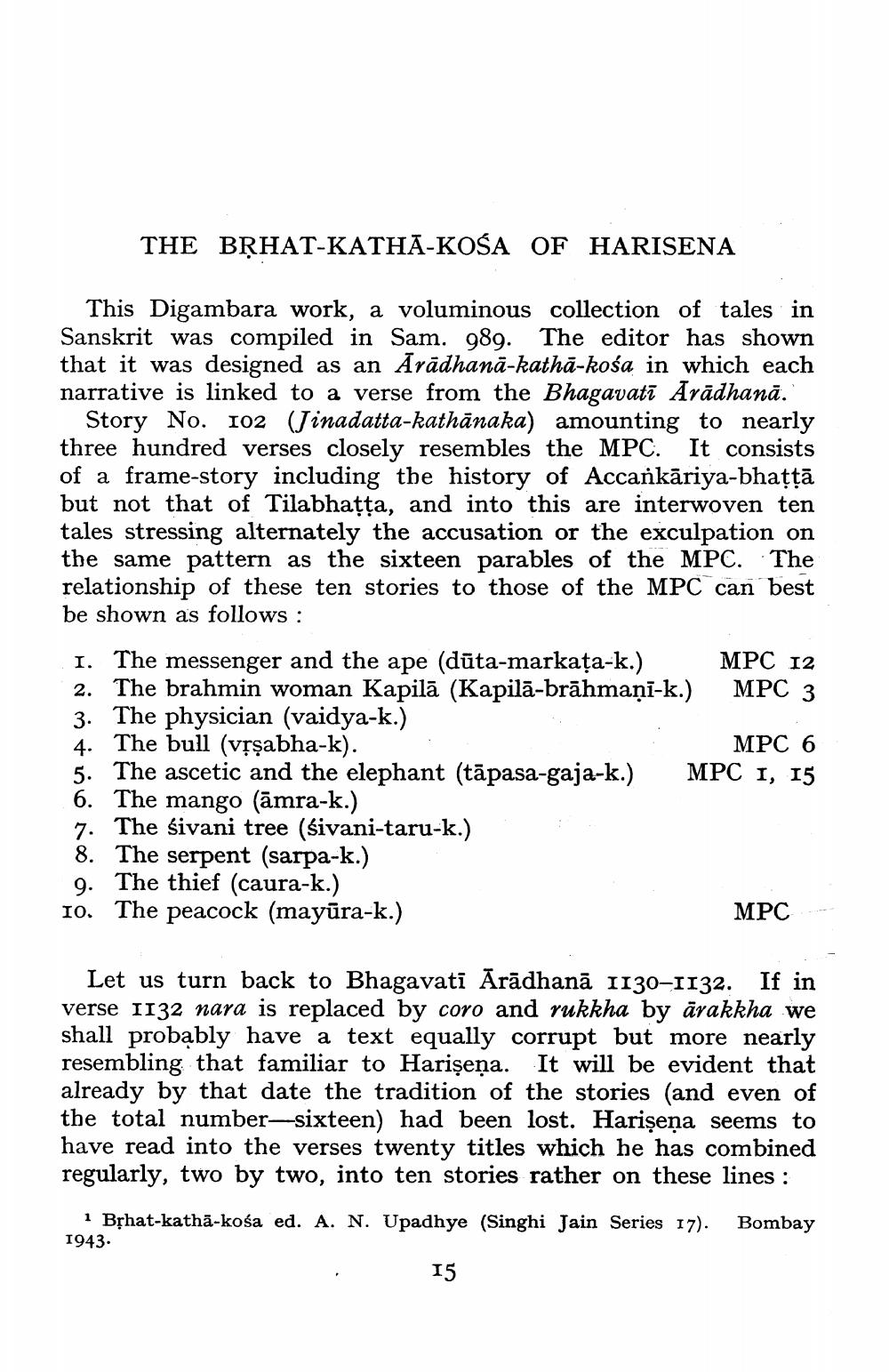________________
THE BRHAT-KATHĀ-KOSA OF HARISENA
This Digambara work, a voluminous collection of tales in Sanskrit was compiled in Sam. 989. The editor has shown that it was designed as an Aradhana-katha-kośa in which each narrative is linked to a verse from the Bhagavatī Ārādhanā.
Story No. 102 (Jinadatta-kathānaka) amounting to nearly three hundred verses closely resembles the MPC. It consists of a frame-story including the history of Accankariya-bhaṭṭā but not that of Tilabhaṭṭa, and into this are interwoven ten tales stressing alternately the accusation or the exculpation on the same pattern as the sixteen parables of the MPC. The relationship of these ten stories to those of the MPC can best be shown as follows:
1. The messenger and the ape (dūta-markata-k.) 2. The brahmin woman Kapila (Kapilā-brāhmaṇī-k.) 3. The physician (vaidya-k.)
4. The bull (vṛṣabha-k).
5. The ascetic and the elephant (tāpasa-gaja-k.)
6. The mango (āmra-k.)
7. The śivani tree (śivani-taru-k.)
8. The serpent (sarpa-k.)
9. The thief (caura-k.)
10. The peacock (mayūra-k.)
MPC 12 MPC 3
MPC 6
MPC 1, 15
MPC
Let us turn back to Bhagavati Ārādhanā 1130-1132. If in verse 1132 nara is replaced by coro and rukkha by arakkha we shall probably have a text equally corrupt but more nearly resembling that familiar to Harişeņa. It will be evident that already by that date the tradition of the stories (and even of the total number-sixteen) had been lost. Hariṣena seems to have read into the verses twenty titles which he has combined regularly, two by two, into ten stories rather on these lines:
1 Bṛhat-katha-kośa ed. A. N. Upadhye (Singhi Jain Series 17). Bombay
1943.
15




